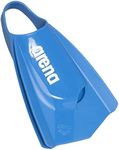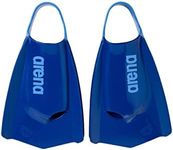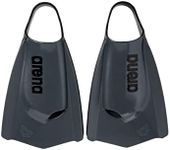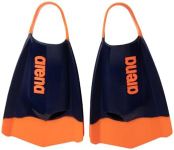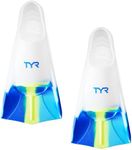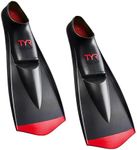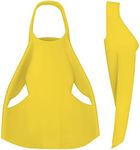Buying Guide for the Best Swim Training Fins
Choosing the right swim-training fins can make a big difference in your swimming experience, whether you’re a beginner learning technique or an advanced swimmer looking to improve speed and strength. The right fins should help you achieve your training goals, feel comfortable, and suit your swimming style. To make the best choice, it’s important to understand the key features and how they relate to your needs in the pool.Fin LengthFin length refers to how long the blade of the fin is, and it plays a big role in how the fins affect your swimming. Short fins are typically less than 15 inches and are designed to mimic the natural kick, making them great for technique work and building leg strength without drastically changing your kick tempo. Medium fins offer a balance between speed and technique, while long fins (over 20 inches) provide more propulsion and are often used for beginners or for building endurance. If you want to focus on technique and speed, short fins are best. For more power and easier swimming, especially if you’re new, longer fins might be more comfortable.
Blade StiffnessBlade stiffness describes how flexible or rigid the fin blade is. Softer, more flexible blades are easier on the legs and better for longer training sessions or for swimmers who want to avoid muscle fatigue. Stiffer blades provide more resistance, which can help build strength but may tire you out faster. If you’re just starting out or have sensitive joints, go for softer blades. If you’re looking to build power and don’t mind a tougher workout, stiffer blades could be a good fit.
Foot Pocket TypeThe foot pocket is the part of the fin where your foot goes, and it can be either open-heel or closed-heel. Closed-heel pockets cover the entire heel and tend to be more comfortable and secure, making them popular for pool training. Open-heel pockets are adjustable and can be easier to put on and take off, but may not feel as snug. If you value comfort and plan to use the fins mainly in the pool, closed-heel is usually the way to go. If you want more adjustability or have wider feet, open-heel might suit you better.
MaterialSwim fins are usually made from rubber, silicone, or a combination of both. Rubber fins are durable and provide a firm feel, but can sometimes cause chafing. Silicone fins are softer, more flexible, and less likely to irritate your skin, making them a good choice for sensitive feet or longer sessions. If comfort is your top priority, look for silicone fins. If you want a firmer, more traditional feel, rubber might be preferable.
BuoyancyBuoyancy refers to whether the fins float or sink in water. Floating fins can help keep your legs higher in the water, which is useful for improving body position and technique. Sinking fins may be less likely to get lost but don’t offer the same support. If you’re working on your body position or are new to swimming, floating fins can be helpful. If you’re confident in your technique, buoyancy may be less important.
